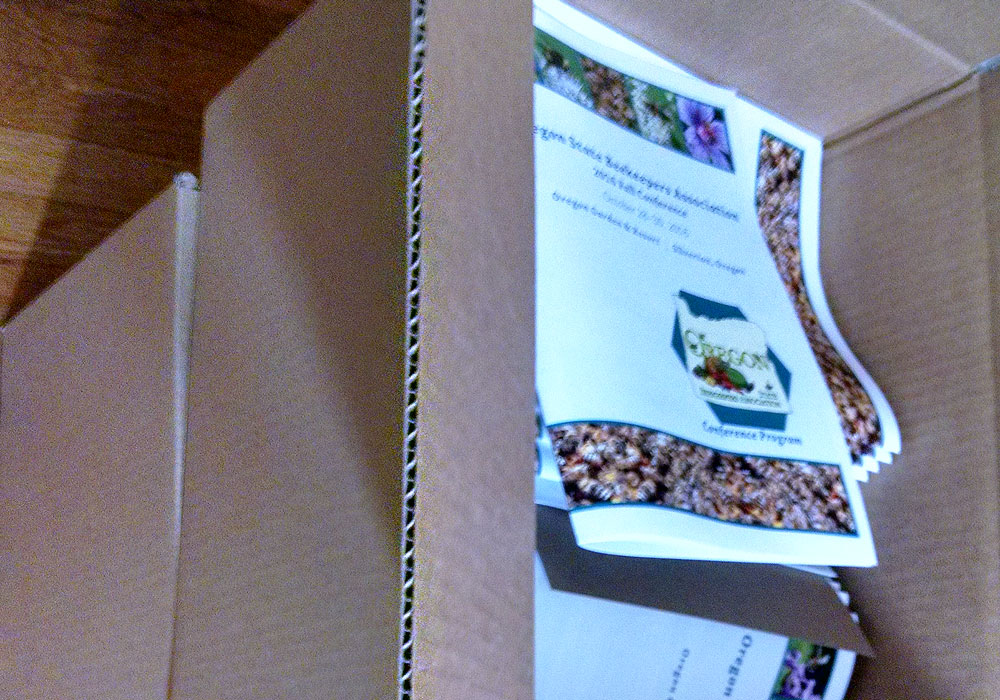March 2017
14The Matter of Presentering . . .
To Proof or Not to Proof? It’s not a question to even think to ask. There’s only one option!
The Habit
And yet, I have a habit of making changes in documents even as I proof and—often as not—after I have proofed. It should have come as no surprise then that when I picked up the printed copies of a conference program I had designed and edited last fall, I saw that I would have done well to have proofed yet once again.
The Example
Although my enthusiasm lies primarily in the process and the work, I also appreciate the end stage of projects. In this case, after days of contacting presenters with requests for abstracts, bios, and photos; after gathering ad copy and tracking vendors; after obtaining details about time and location of presentations and events; and after sorting, editing, arranging, indesigning, photoshopping, and redesigning because of those to-be-expected, last-minute program changes, I was able to hold something in hand.
The Moment of Truth
As I pulled a copy of the program from one of the printer’s boxes and quickly leafed through, the error virtually leapt from the page. The appreciation I had written was at the end, thanking those who made the various presentations during the conference. My intended last-minute edit involved a change from thanking presenters to thanking those presenting—along with those attending and so forth. Rather than lop off an ers, I had cut only the s before adding the ing; as a result, the “word” is presentering. It sits in a very conspicuous spot. And it sits in that very same spot in hundreds of copies.
Although I know that stuff happens to us all, I do aim to avoid such preventable errors. There are times when I have met such errors, whether introduced by myself or by someone else, with a desire to burn the whole lot.
As the moment of surprise passed, however, I found myself laughing.
The “Justification”
Those who travel to a conference and present the results of their research, share their years of experience, express their concerns and values, and all the rest do far more than make a presentation. They are present. They are available to those attending the conference as well as to other presenters for discussion, elaboration, problem solving, and developing new ideas. They are indeed a presenter and what they do is known as presenting, yet their involvement goes beyond the act of making their presentation. Presentering, in its own way, suggests something more.
The Lesson
Even so, in the future, I’ll be more mindful of the final proof. I may even turn on my computer’s spell check, just in case!


Recent Comments